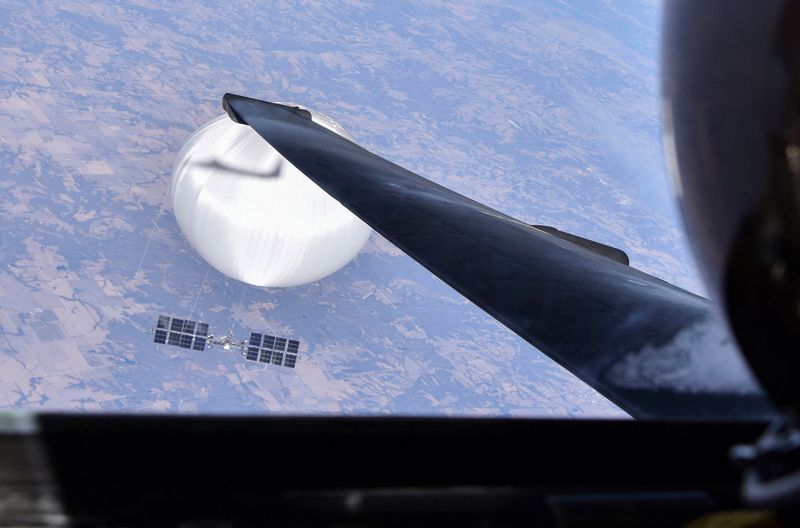US says it cannot confirm China collected real-time data from spy balloon
2023.04.04 04:39

© Reuters. FILE PHOTO: A U.S. Air Force U-2 pilot looks down at the suspected Chinese surveillance balloon as it hovers over the central continental United States on February 3, 2023 before later being shot down by the Air Force off the coast of South Carolina, in t
(Reuters) – U.S. President Joe Biden’s administration said on Monday it could not confirm reports that China was able to collect real-time data from a spy balloon as it flew over sensitive military sites earlier this year, saying analysis was still ongoing.
NBC News on Monday reported that the Chinese balloon was able to transmit data back to Beijing in real time despite the U.S. government’s efforts to prevent it from doing so – a disclosure that could deepen Republican criticism of Biden for waiting for the balloon to reach a safe location before shooting it down.
NBC cited two current senior U.S. officials and one former senior administration official.
The White House and the Pentagon told reporters that they could not confirm that account. The Pentagon said experts were still analyzing debris collected from the balloon after it was shot down on Feb. 4.
“I could not confirm that there was real-time transmission from the balloon back to (China) at this time,” said Pentagon spokesperson Sabrina Singh, adding, “that’s something we’re analyzing right now.”
The Chinese Foreign Ministry said on Tuesday that China has made it clear that the unmanned civilian airship that flew over U.S. territory was “an unexpected and isolated event”.
“China rejects distortion and hyping up of this incident,” spokesperson Mao Ning said at a regular briefing in response to a question about the U.S. remarks.
The balloon, which Beijing denies was a government spy vessel, spent a week flying over the United States and Canada before the U.S. military shot it down off the Atlantic Coast on Biden’s orders.
Reuters has reported that the U.S. officials believe the high-altitude balloon was controlled by Beijing and was able to maneuver as it flew over the United States, at times steering left or right.
Still, at the time, U.S. officials played down the balloon’s impact on national security, saying it took measures to limit its ability to collect information on sensitive U.S. sites. It also played down the idea that the balloon was much more capable of collecting information than Chinese spy satellites, while acknowledging the balloon’s ability to loiter longer over U.S. locations than a satellite.
The Chinese balloon incident prompted U.S. Secretary of State Antony Blinken to postpone a planned visit to Beijing and further strained relations between Washington and Beijing.
The episode caused an uproar in Washington and led the U.S. military to search the skies for other objects that were not being captured on radar.
The FBI has taken the lead in the analysis since the United States said on Feb. 17 it had successfully concluded recovery efforts off South Carolina to collect sensors and other debris from the suspected Chinese surveillance balloon.








